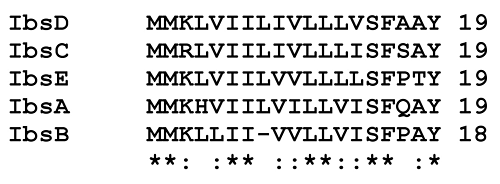You are here: Home > Section on Environmental Gene Regulation
Small Regulatory RNAs and Small Proteins

- Gisela Storz, PhD, Head, Section on Environmental Gene Regulation
- Chase L. Beisel, PhD, Postdoctoral Fellow
- Sylvain Durand, PhD, Visiting Fellow
- Fanette Fontaine, PhD, Visiting Fellow
- Elizabeth M. Fozo, PhD, Postdoctoral Fellow
- Ryan T. Fuchs, PhD, Postdoctoral Fellow
- Errett C. Hobbs, PhD, Postdoctoral Fellow
- Maureen K. Thomason, MS, Graduate Student
- Lauren Waters, PhD, Postdoctoral Fellow
- Xuefeng Yin, BS, Graduate Student
- Aixia Zhang, PhD, Staff Scientist
Currently, we have two main interests: 1) the identification and characterization of small noncoding RNAs and 2) the identification and characterization of small proteins of less than 50 amino acids. Both small RNAs and small proteins have been overlooked because they are not detected in biochemical assays and because the corresponding genes are missed by genome annotation and are poor targets for genetic approaches. However, both classes of these small molecules are now being found to have important regulatory roles.
Identification and characterization of small regulatory RNAs
During the past ten years, we have carried out several different systematic screens for small regulatory RNA genes in E. coli. The screens, which included computational screens for conservation of intergenic regions and direct detection after size selection or co-immunoprecipitation with the RNA binding protein Hfq, are all applicable to other organisms. We are now examining small-RNA expression using tiled microarrays together with deep sequencing to further extend our identification of small RNAs, particularly antisense RNAs.
A large focus of the group has been to elucidate the functions of the small RNAs in E. coli. Early on we showed that the OxyS RNA, whose expression is induced in response to oxidative stress, represses translation through limited base pairing with target mRNAs. We also discovered that the OxyS action is dependent on the Sm-like Hfq protein, which functions as a chaperone to facilitate OxyS RNA base pairing with its target mRNAs. It is now clear that Hfq-binding small RNAs, which act through limited base pairing, are integral to many different stress responses in E. coli. We found that the Hfq-binding RNA MicC, whose expression is induced in minimal medium and at low temperature, represses translation of the OmpC outer membrane porin. We also recently reported that the Hfq-binding small RNA FnrS, whose expression is induced by FNR upon a shift from aerobic to anaerobic conditions, acts to downregulate the levels of a variety of mRNAs encoding metabolic enzymes. The results suggest that the FnrS RNA extends the FNR regulon and increases the efficiency of anaerobic metabolism by repressing the synthesis of enzymes that are not needed under these conditions.
In addition to small RNAs that act via limited base pairing, we have become interested in small antisense RNAs that have the potential to form extensive base pairing interactions with their mRNA targets encoded on the opposite strand. We previously showed that base pairing between the GadY RNA and the 3´-untranslated region of the gadX mRNA encoded opposite GadY leads to increased levels of the gadX mRNA and GadX protein. Recently, we demonstrated that gadX is transcribed in an operon with gadW and that base pairing of GadY with the gadXW mRNA results in processing, which gives rise to two halves that accumulate to higher levels than the full-length mRNA. Interestingly, multiple enzymes, including the double strand RNA–specific endoribonuclease RNase III, are involved in the GadY-directed cleavage.

Figure 1. Alignment of the Ibs proteins from E. coli
We also found that a large class of antisense RNAs acts to repress the synthesis of small toxic proteins. For example, SymR represses the sense symE gene, which encodes a protein with properties of a toxin despite having homology to the MazE antitoxin. The importance of repressing symE expression is emphasized by the observation that the synthesis of the SymE protein is repressed by the LexA repressor, the SymR RNA, and the Lon protease. In another study, we characterized the Sib RNAs, which are encoded by five repeats in E. coli K-12. Curiously, a phenotype reminiscent of plasmid addiction was observed for overexpression of the Sib RNAs, and further examination of the SIB repeat sequences revealed conserved open reading frames encoding highly hydrophobic 18-19 amino acid proteins (Ibs) opposite each sib gene (Figure 1). The Ibs proteins were found to be toxic when overexpressed, and this toxicity could be prevented by co-expression of the corresponding Sib RNA. Two other RNAs encoded divergently in another intergenic region were similarly found to encode a small hydrophobic protein (ShoB) and an antisense RNA regulator (OhsC). Most recently, computational screens together with experimental validation have shown that these small hydrophobic protein-antisense RNA gene modules, termed type 1 toxin-antitoxin modules, are much more widely distributed among bacteria than previously appreciated.
Studies to further characterize other Hfq-binding RNAs and antisense RNAs and to elucidate the roles of small RNAs that act in ways other than base pairing are ongoing.
Identification and characterization of small proteins
In our genome-wide screens for small RNAs, we found that a number of short RNAs actually encode small proteins. The correct annotation of the smallest proteins is one of the biggest challenges of genome annotation, and perhaps more importantly, few annotated short ORFs have been confirmed to correspond to synthesized proteins. Although these proteins have largely been missed, the few small proteins that have been studied in detail in bacterial and mammalian cells have been shown to have important functions in signaling and in cellular defenses. Thus, we established a project to identify and characterize E. coli proteins of less than 50 amino acids.
We used sequence conservation and ribosome binding site models to predict genes encoding small proteins, defined as having 16-50 amino acids, in the intergenic regions of the E. coli genome. We tested expression of these predicted as well as previously annotated small proteins by integrating the sequential peptide affinity tag directly upstream of the stop codon on the chromosome and assaying for synthesis using immunoblot assays. This approach confirmed that 20 previously annotated and 18 newly discovered proteins of 16-50 amino acids are synthesized. Remarkably more than half of the newly discovered proteins are predicted to be single transmembrane proteins, nine of which we showed co-fractionate with cell membranes.
We are employing many of the approaches the group has used in characterizing the functions of small regulatory RNAs to elucidate the functions of the small proteins. Systematic assays for the accumulation of tagged versions of the proteins showed that many small proteins accumulate under specific growth conditions or after exposure to stress. We also generated and screened bar-coded null mutants and identified small proteins required for resistance to cell envelope stress and acid shock. To purify the small proteins and identify co-purifying complexes, we are now exploiting the attached sequential peptide affinity tag. The combination of these approaches will give insights into when, where, and how the small proteins are acting.
Additional Funding
- PRAT Fellowship Award to Dr. Errett Hobbs (2008-2010)
- PRAT Fellowship Award to Dr. Lauren Waters (2009-2011)
- Life Sciences Research Foundation to Dr. Chase Beisel (2010-2012)
Publications
- Hemm MR, Paul BJ, Miranda-Ríos J, Zhang A, Soltanzad N, Storz G. Small stress response proteins in Escherichia coli: proteins missed by classical proteomic studies. J Bacteriol. 2010;192:46-58.
- Hobbs EC, Astarita JL, Storz G. Small RNAs and small proteins involved in resistance to cell envelope stress and acid shock in Escherichia coli: analysis of a bar-coded mutant collection. J Bacteriol. 2010;192:59-67.
- Durand S, Storz G. Reprogramming of anaerobic metabolism by the FnrS small RNA. Mol Microbiol. 2010;75:1215-1231.
- Fozo EM, Makarova KS, Shabalina SA, Yutin N, Koonin EV, Storz G. Abundance of type I toxin-antitoxin systems in bacteria: searches for new candidates and discovery of novel families. Nucleic Acids Res. 2010;38:3743-3759.
- Beisel CL, Storz G. Base pairing small RNAs and their roles in global regulatory networks. FEMS Microbiol Rev. 2010;34:866-882.
Collaborators
- Susan Gottesman, PhD, Laboratory of Molecular Biology, NCI, Bethesda, MD
- Brian J. Paul, PhD, DuPont Central Research and Development, Wilmington, DE
- Eugene V. Koonin, PhD, Evolutionary Genetics Research Group, NCBI, Bethesda, MD
- Kira S. Makarova, PhD, Evolutionary Genetics Research Group, NCBI, Bethesda, MD
- Kenneth E. Rudd, PhD, University of Miami School of Medicine, Miami, FL
- Thomas D. Schneider, PhD, Center for Cancer Research Nanobiology Program, NCI, Frederick, MD
Contact
For more information, email storz@helix.nih.gov or visit cbmp.nichd.nih.gov/segr.


